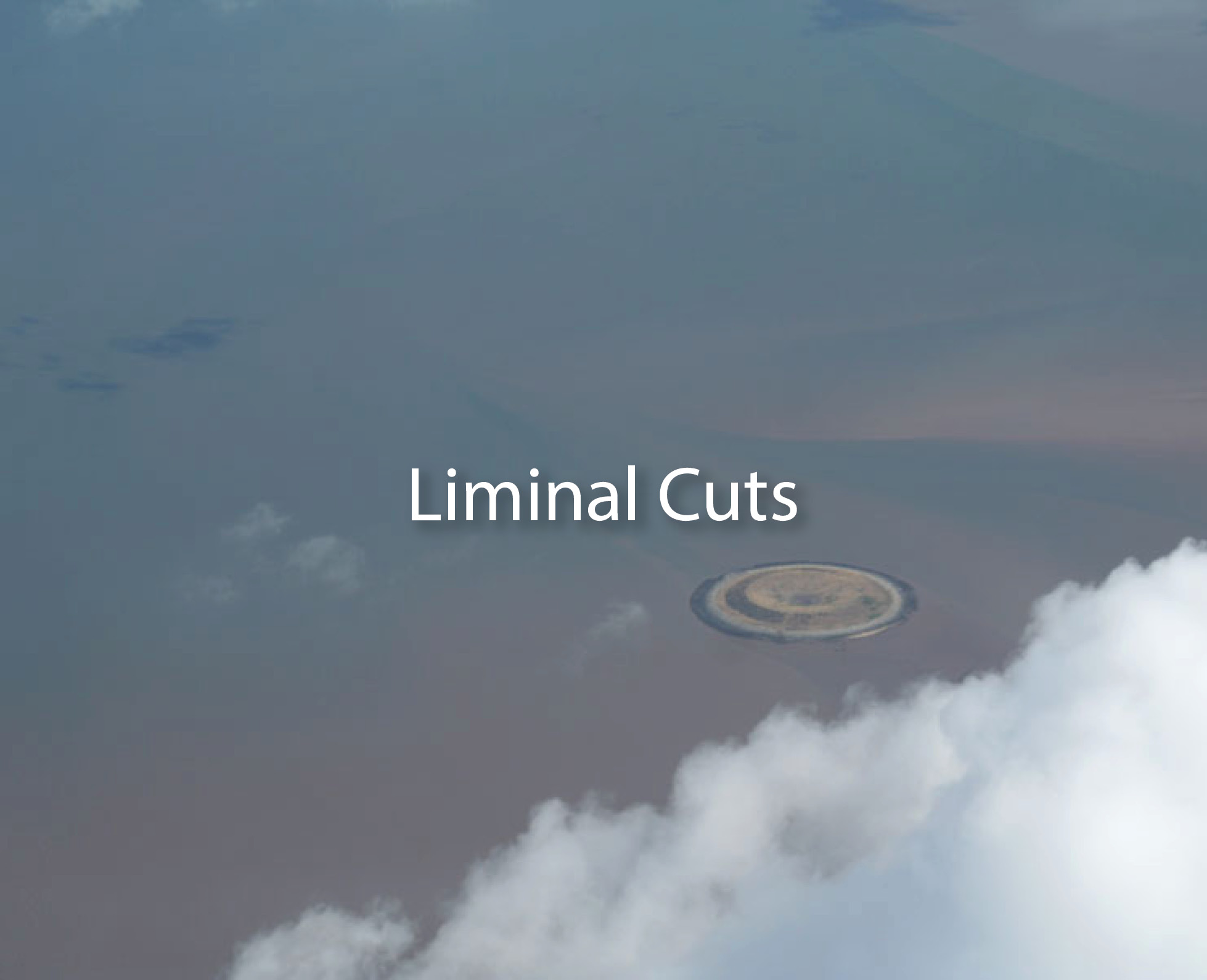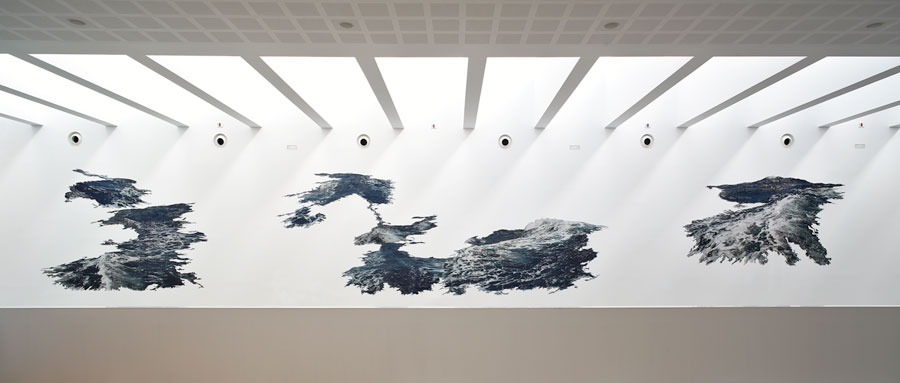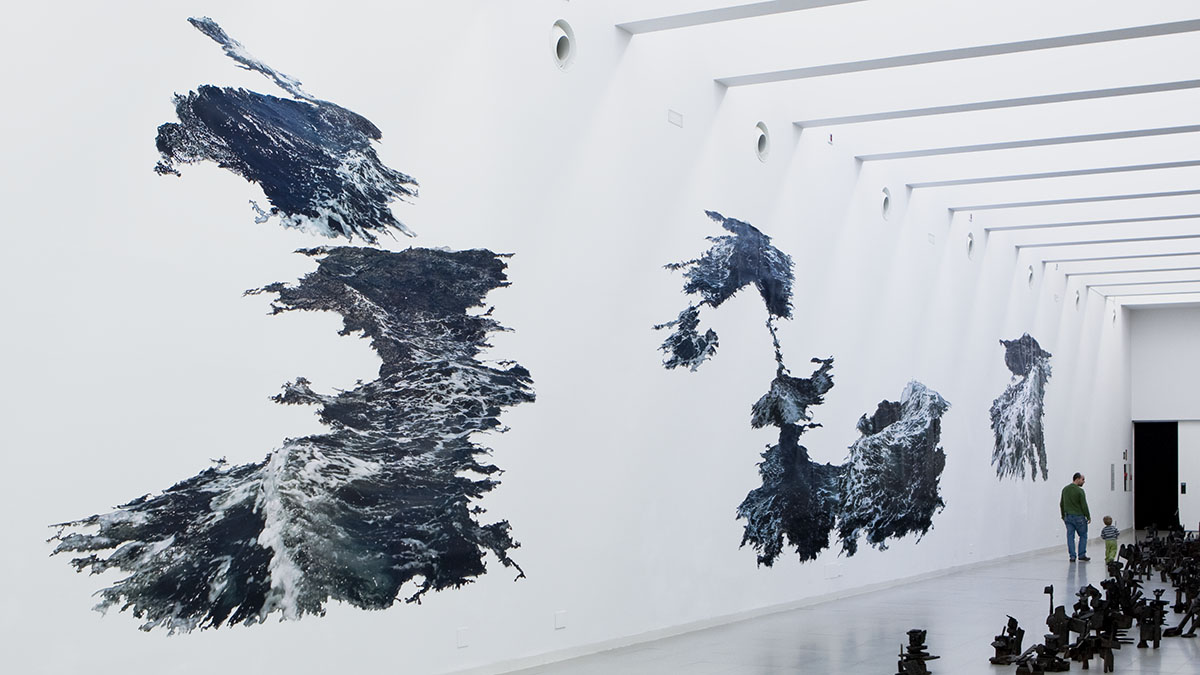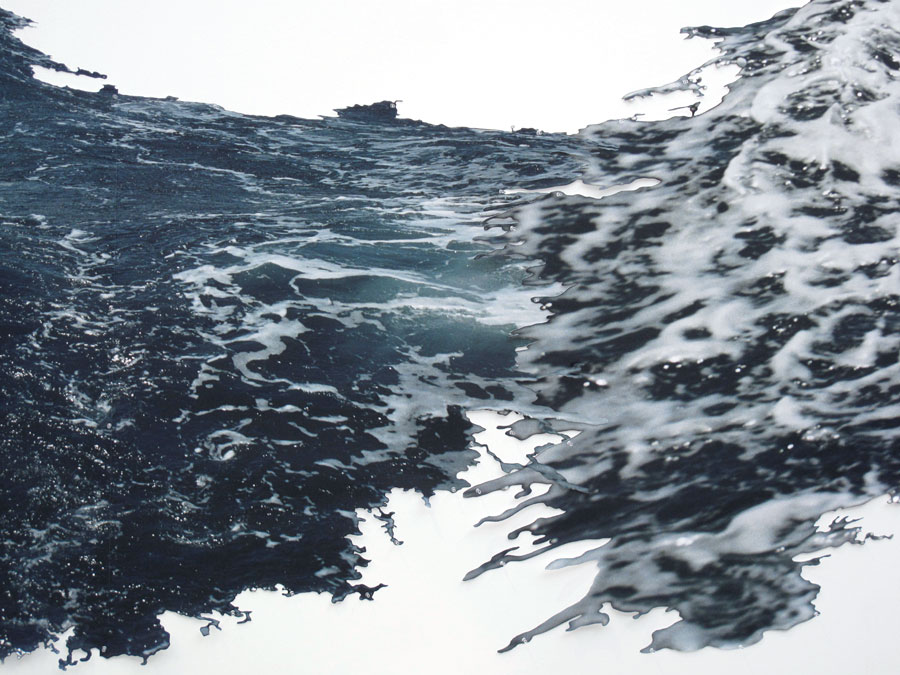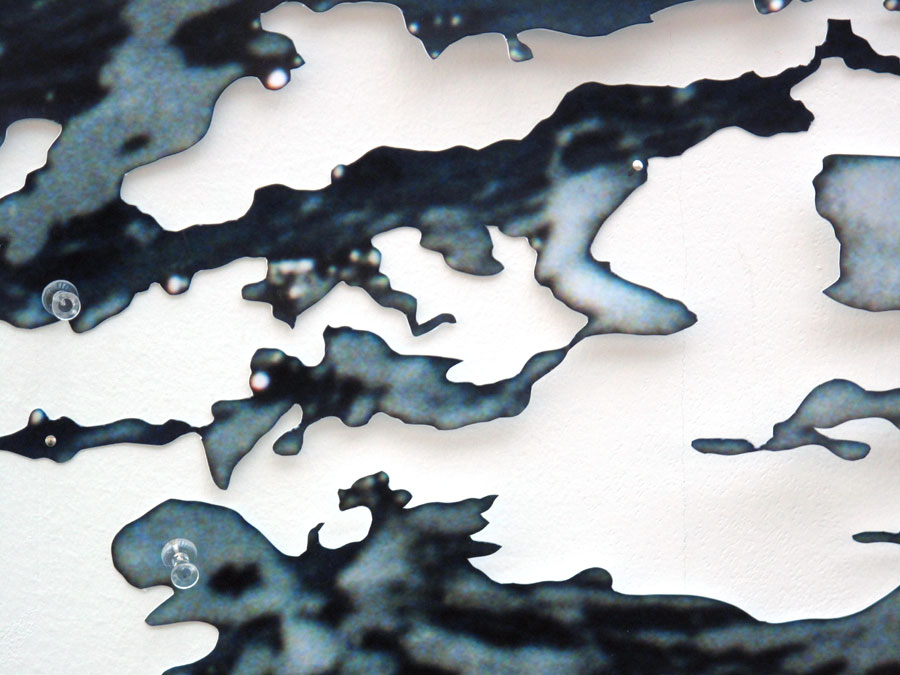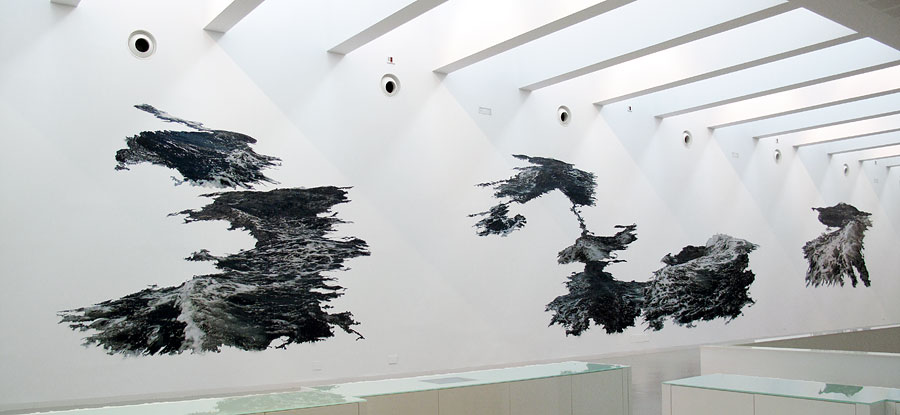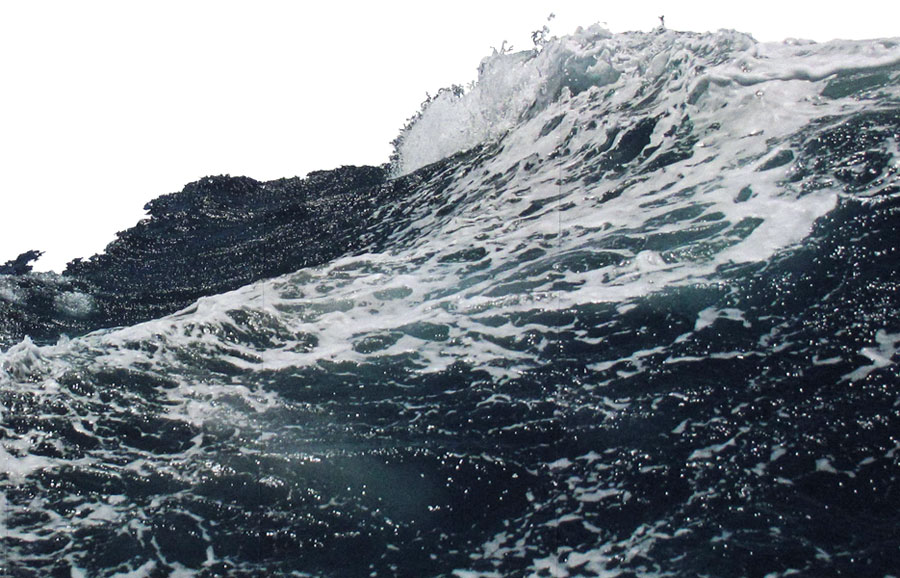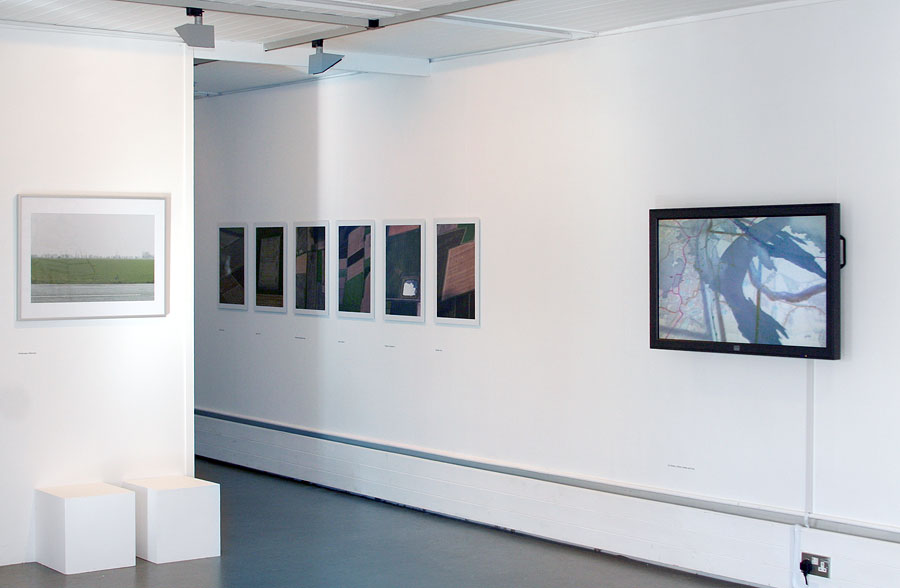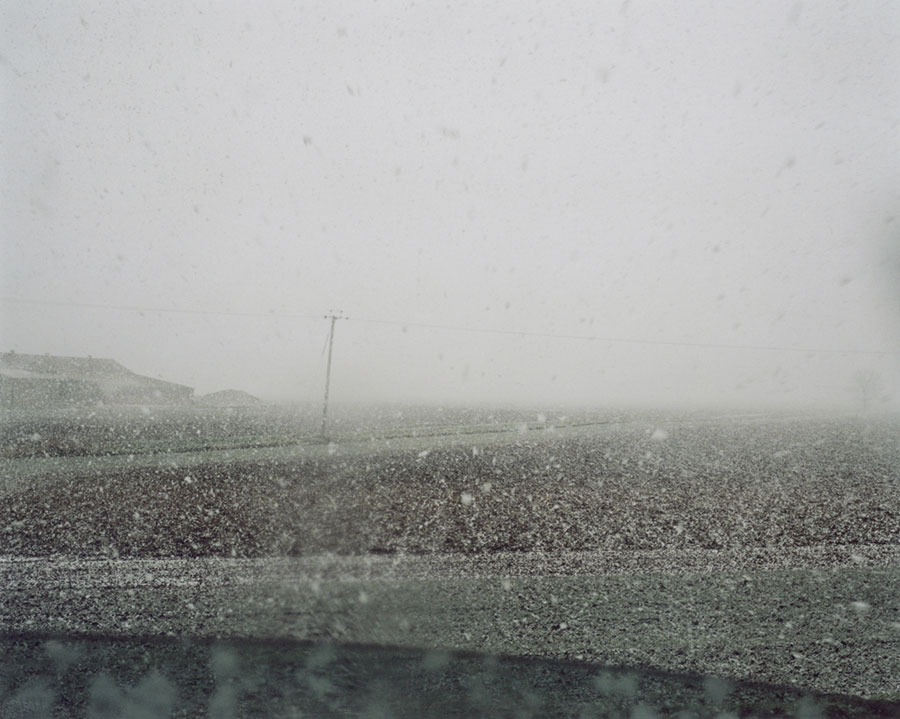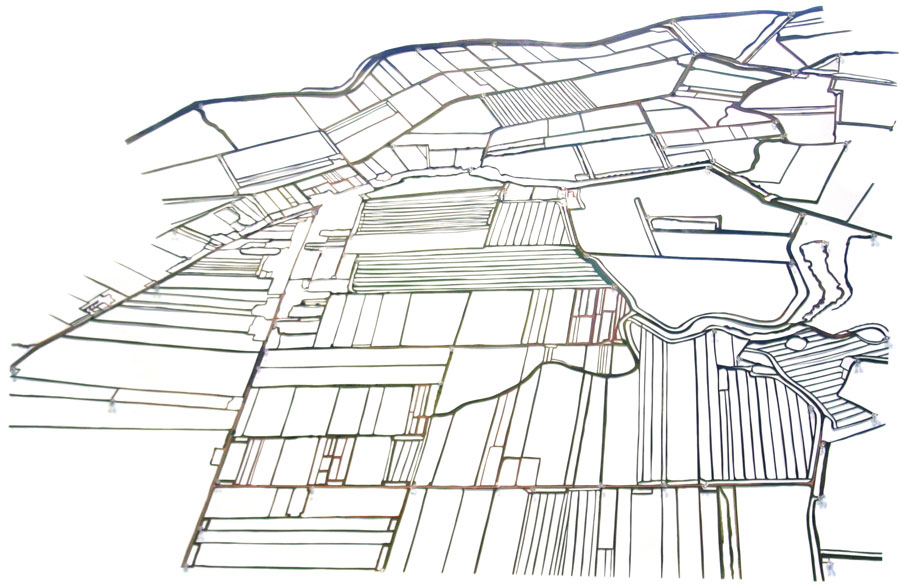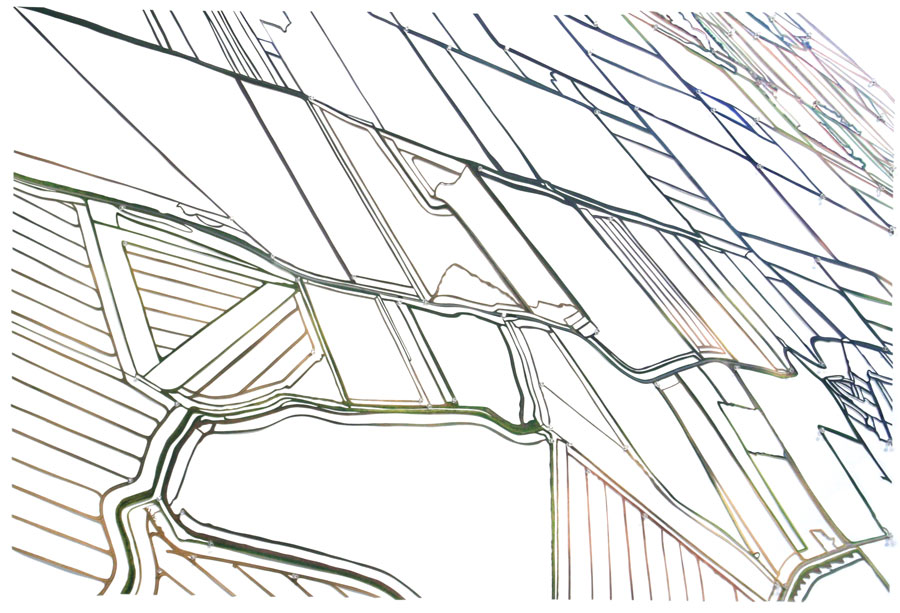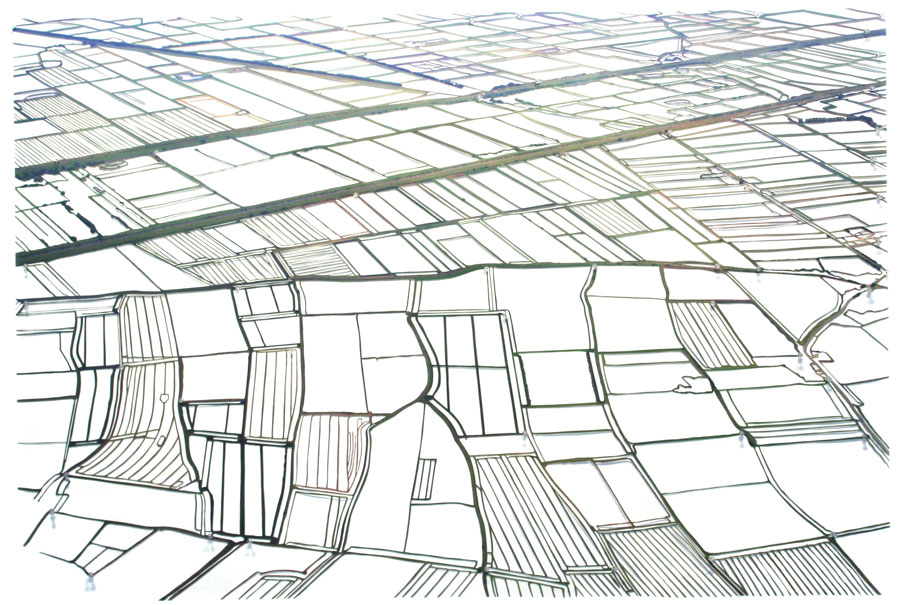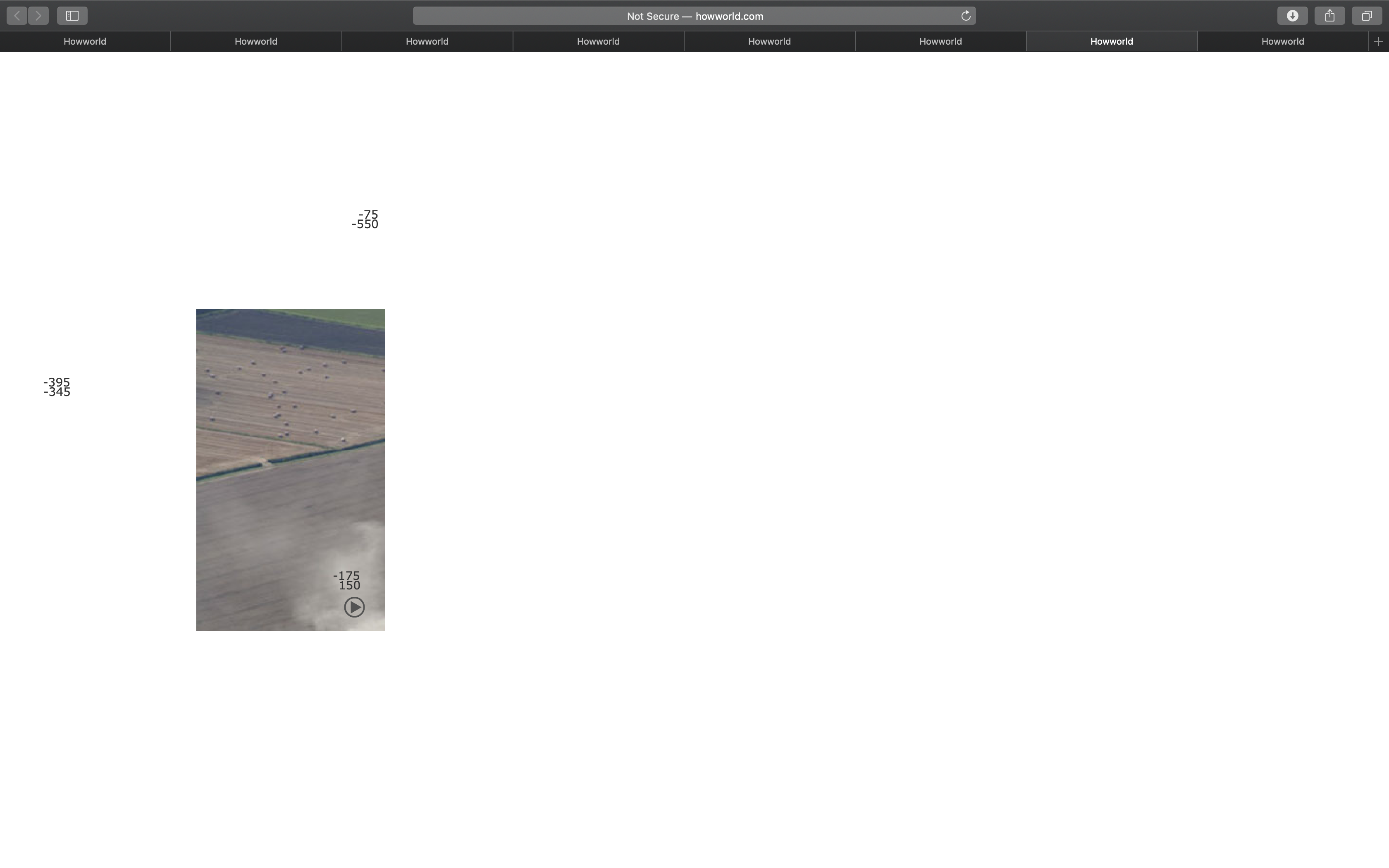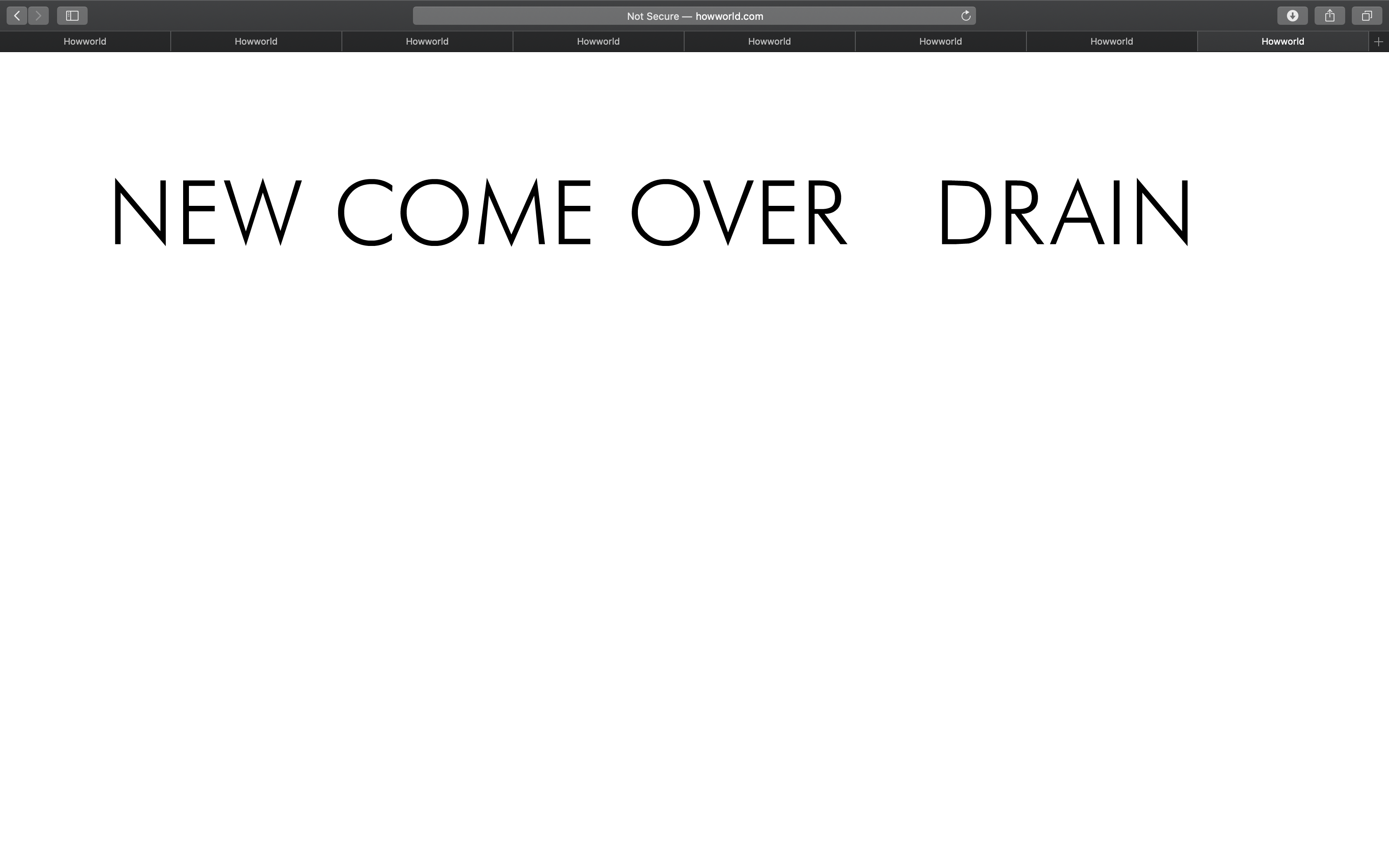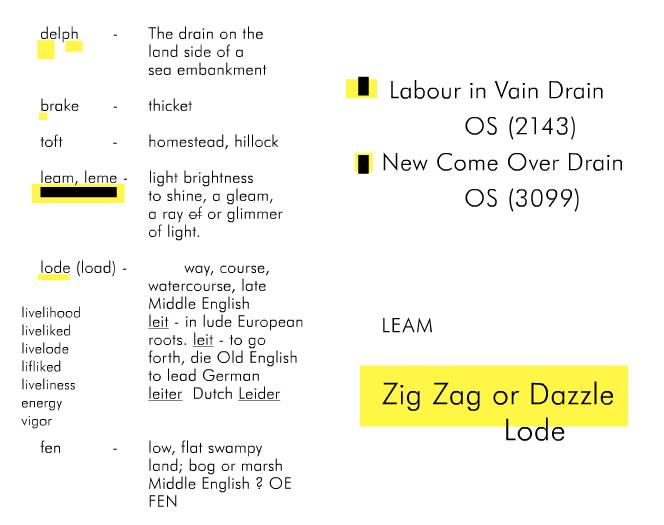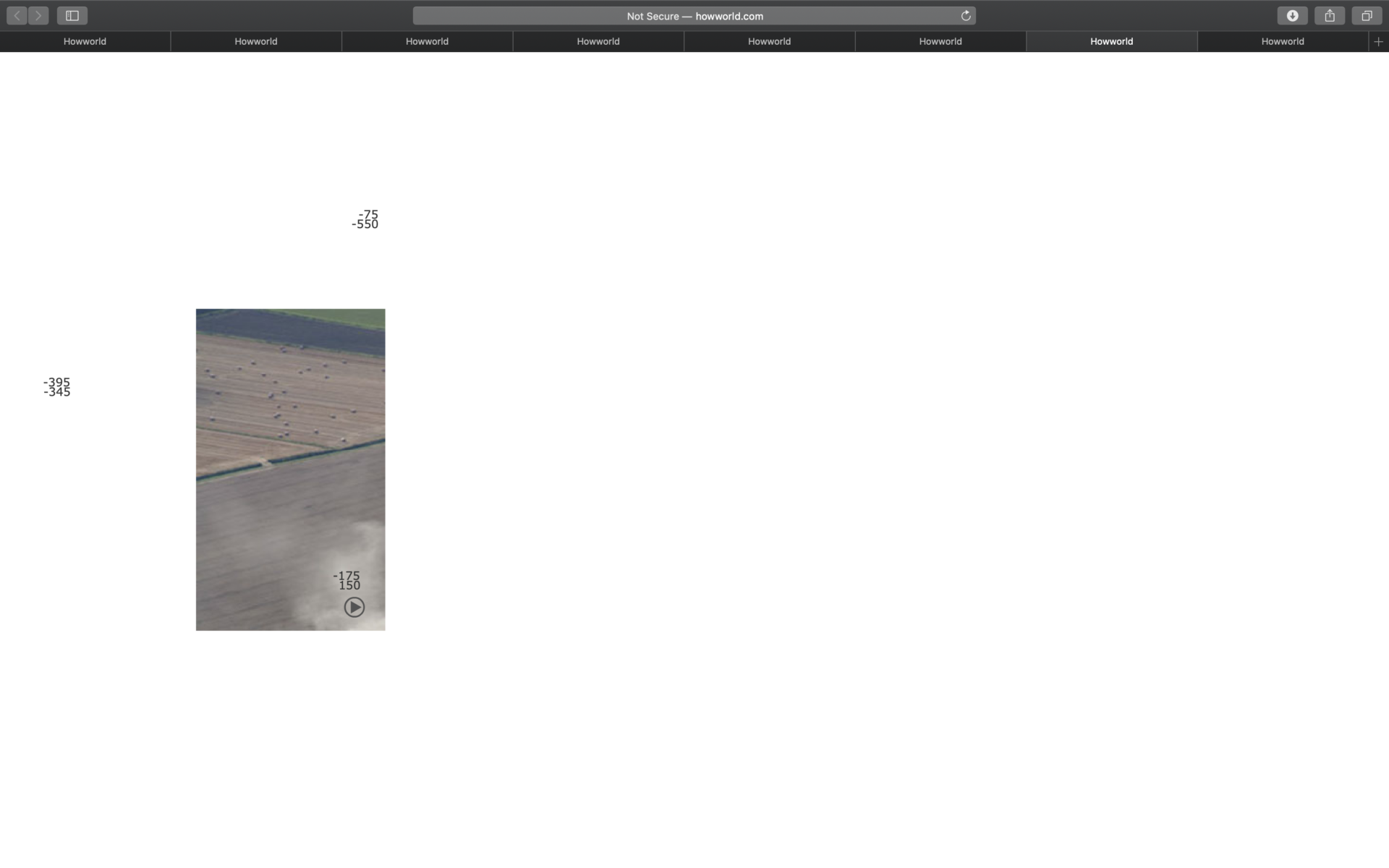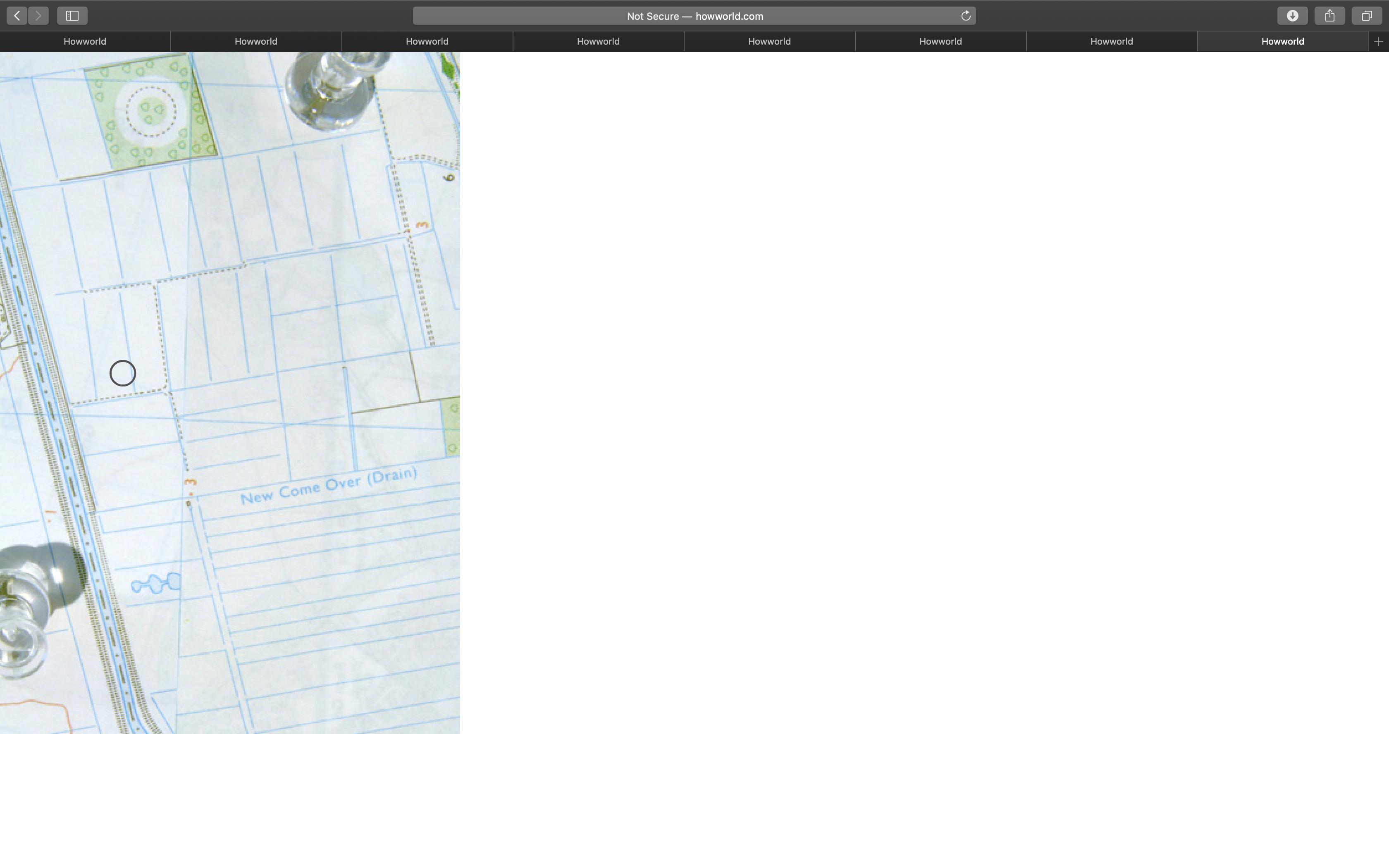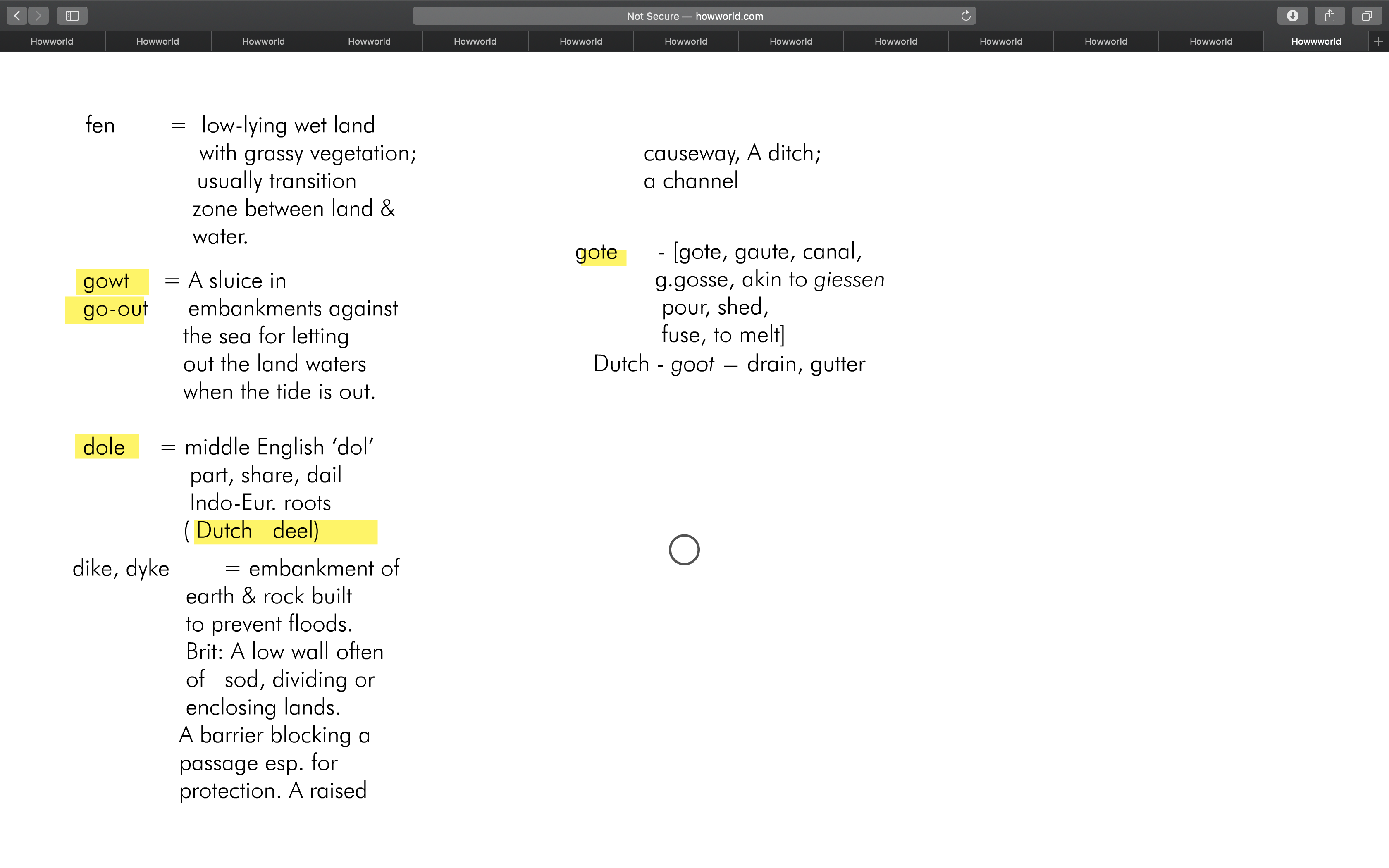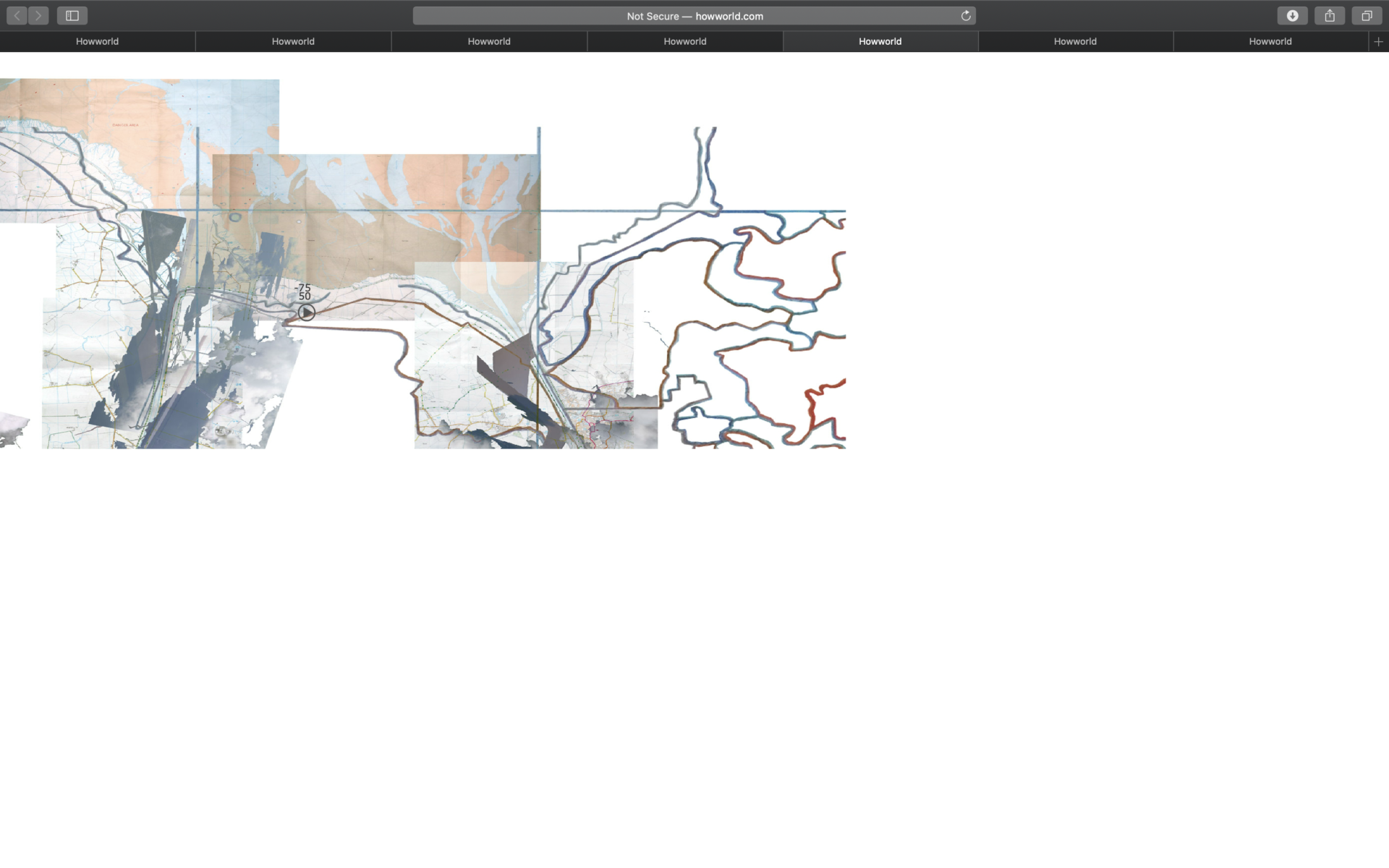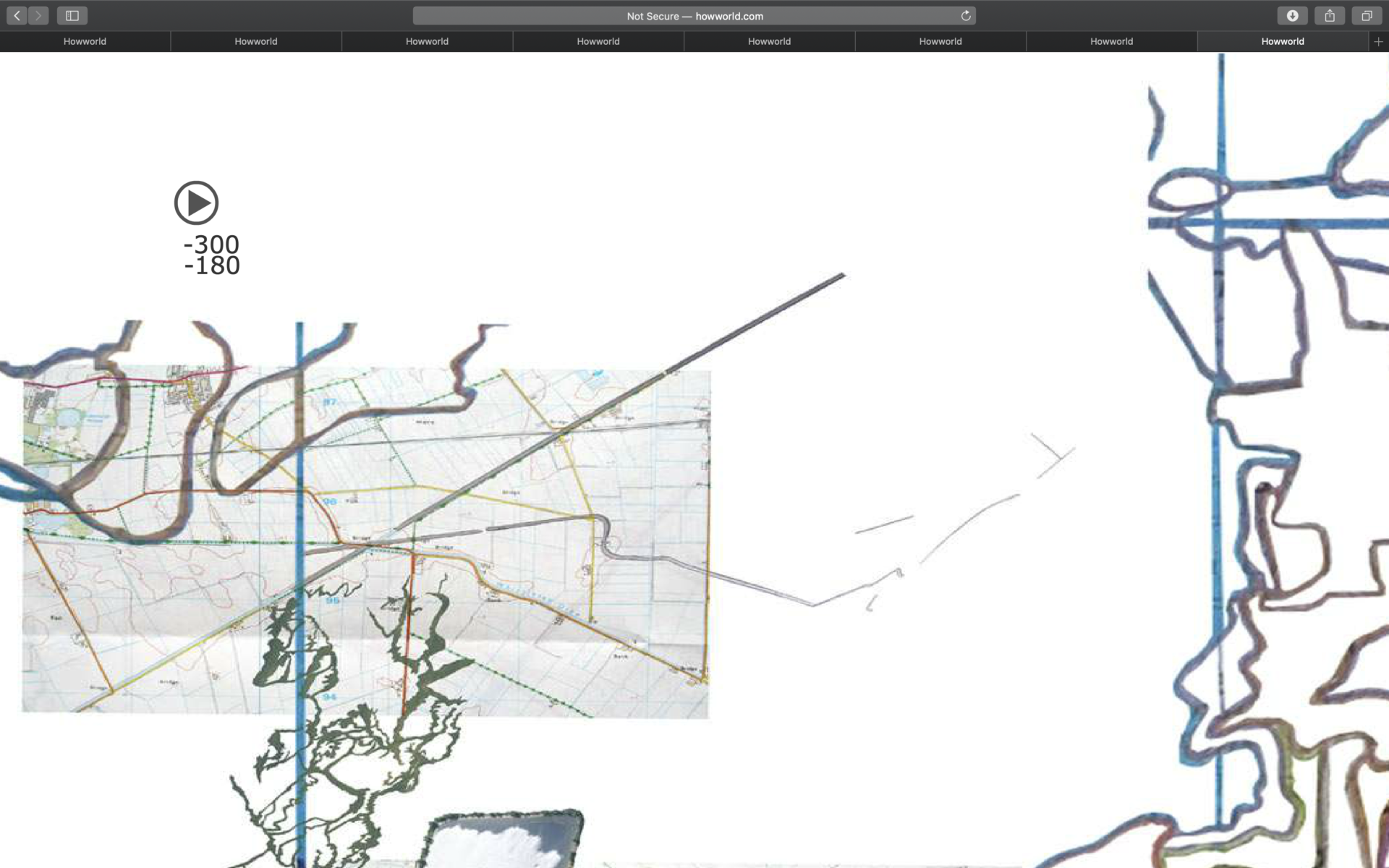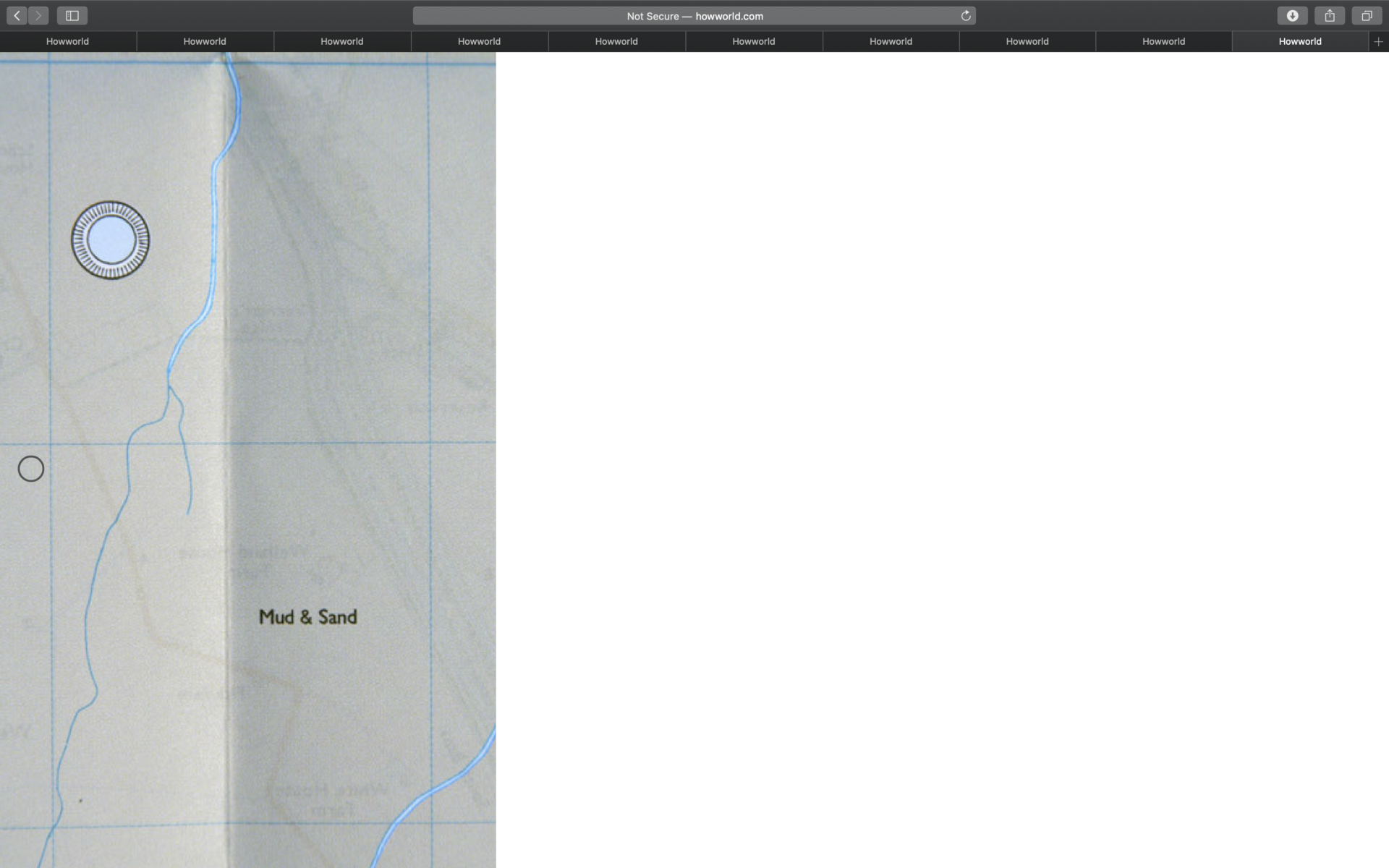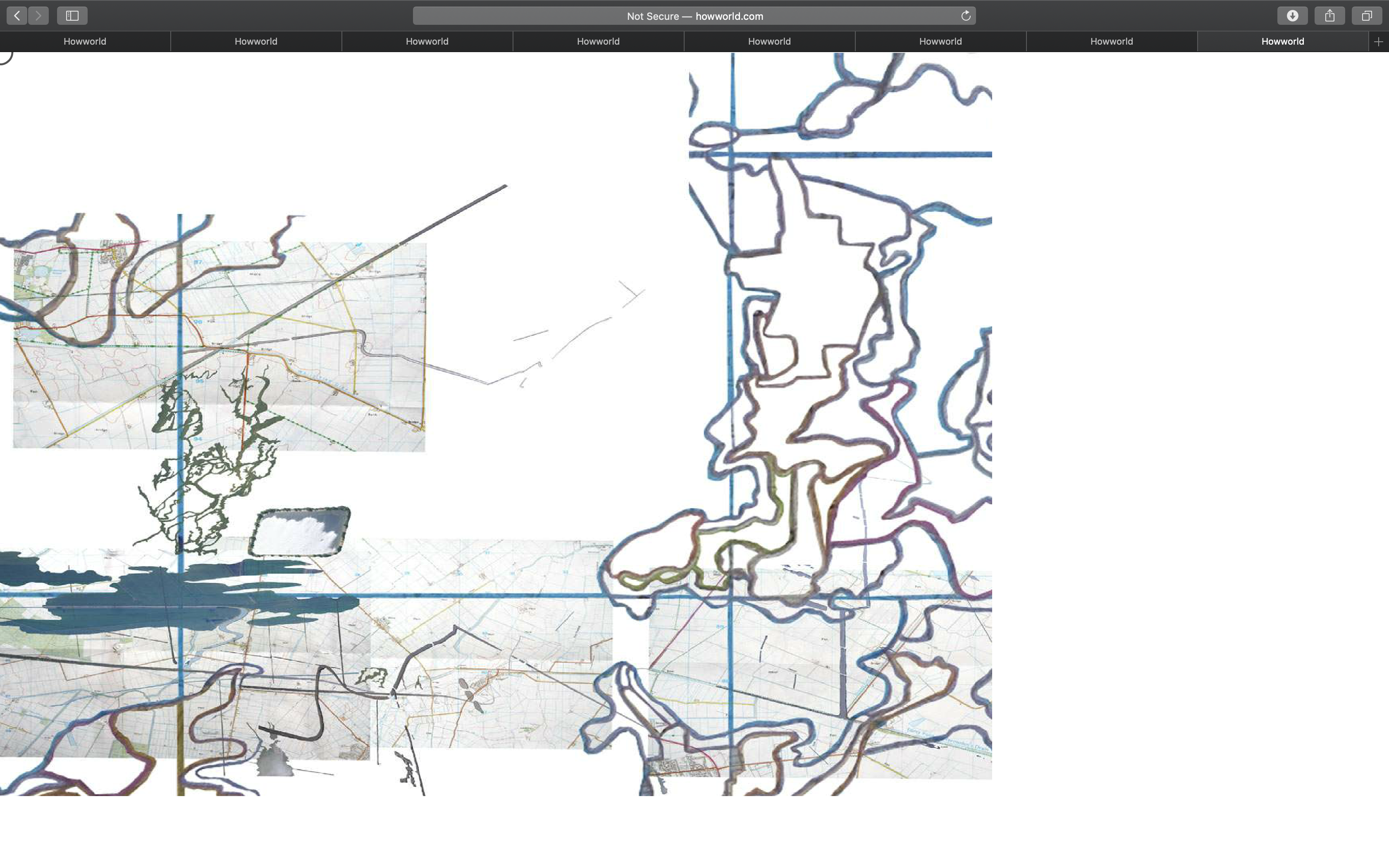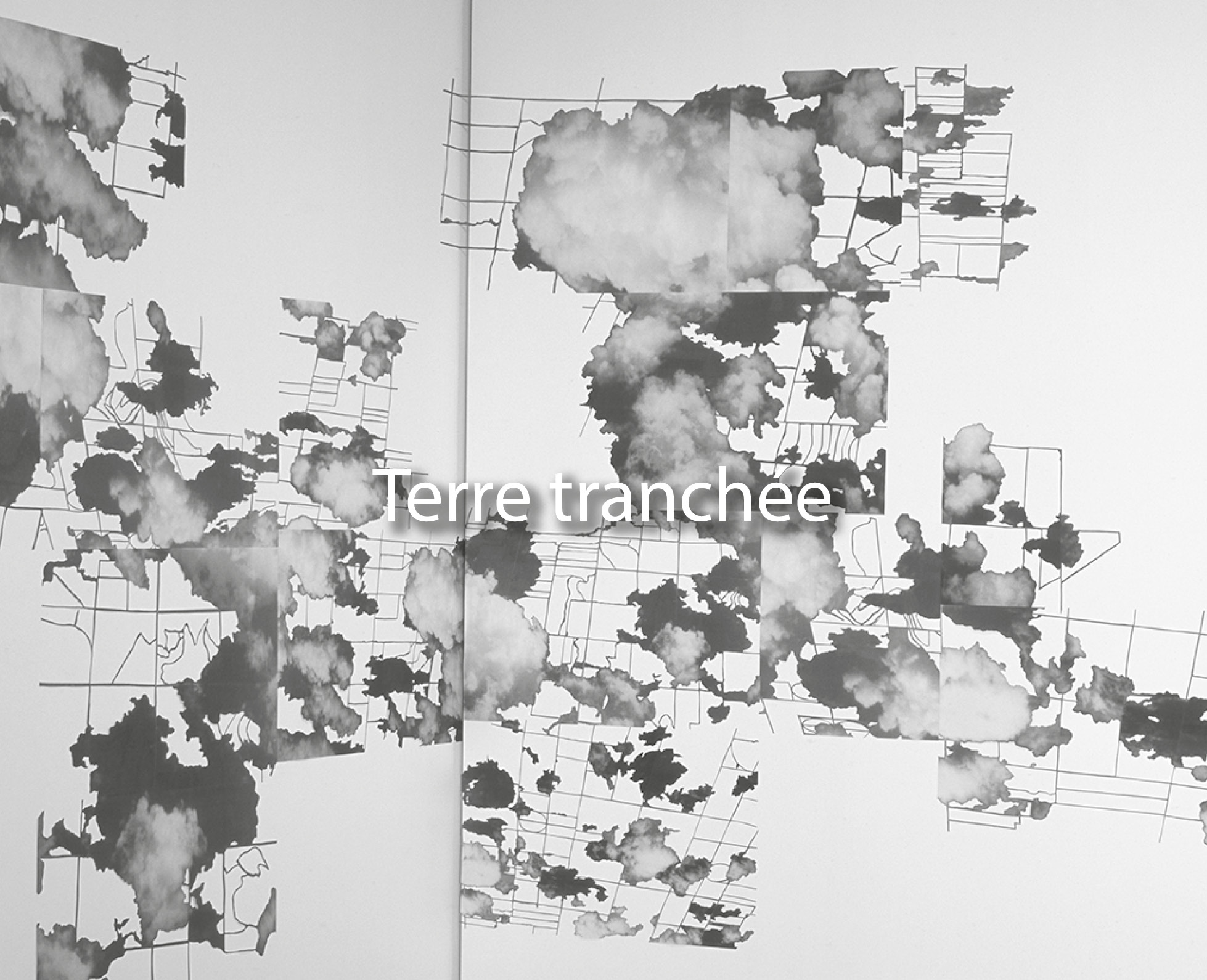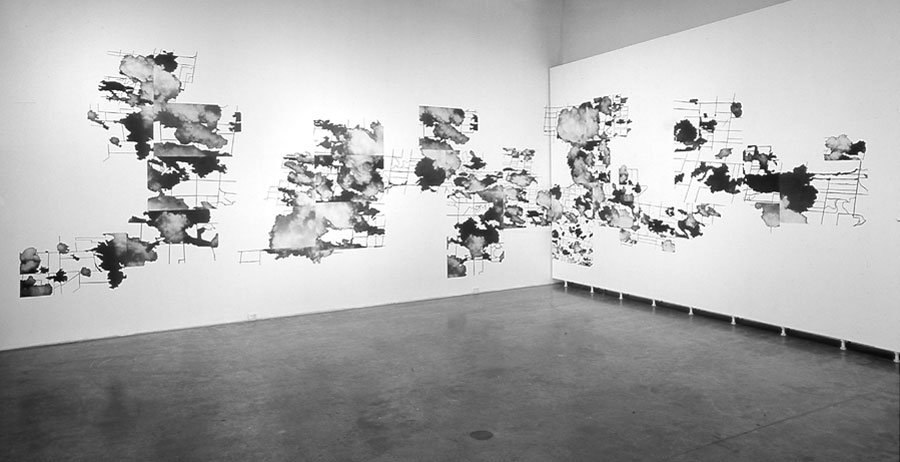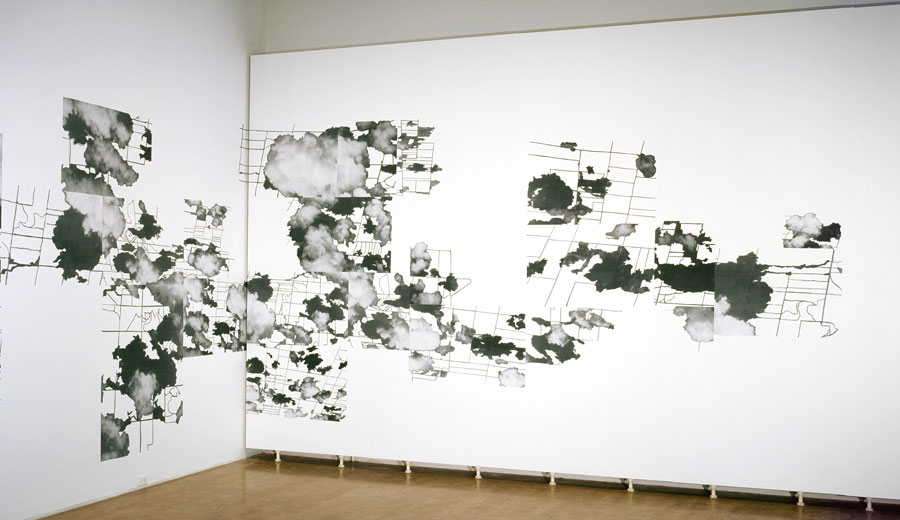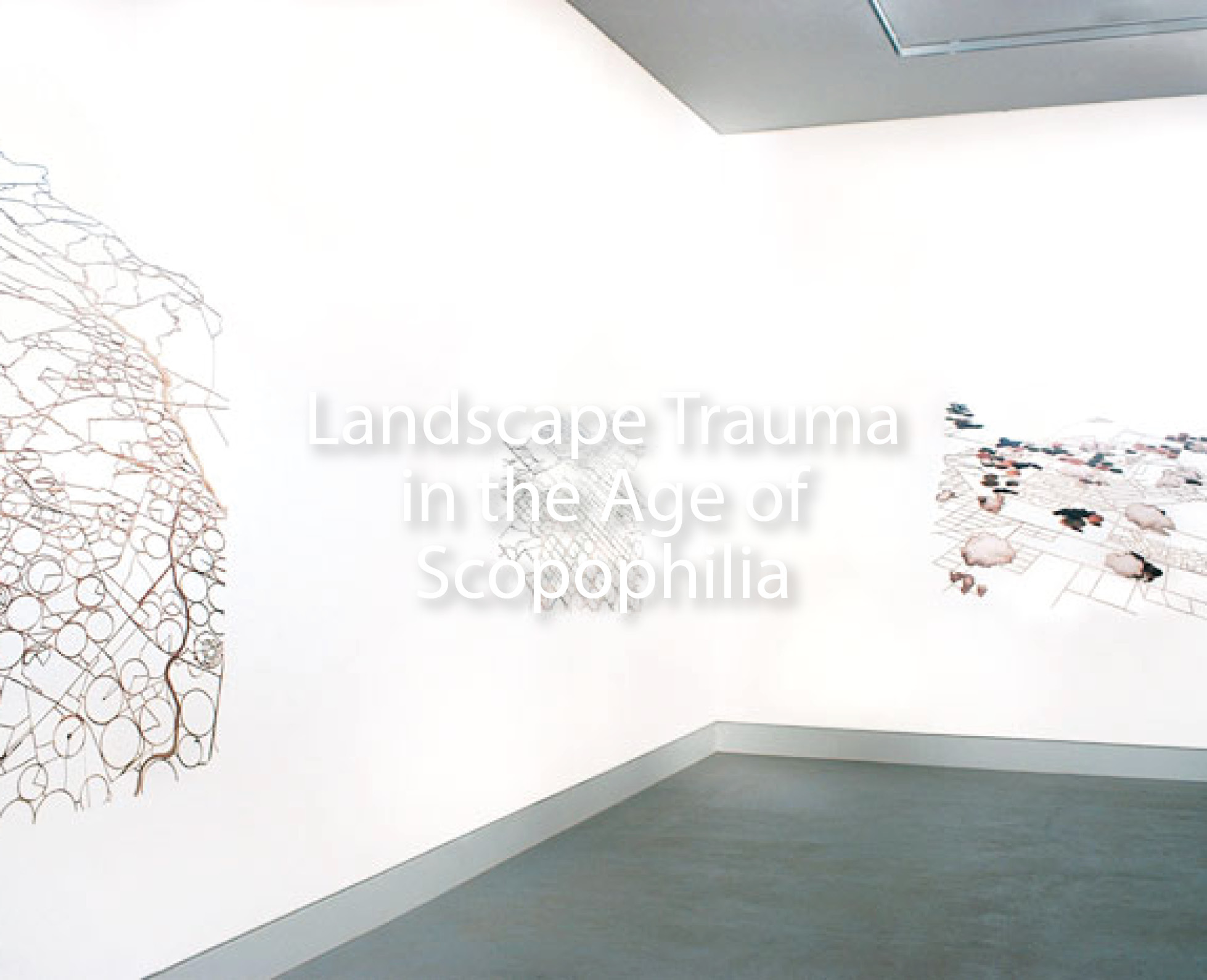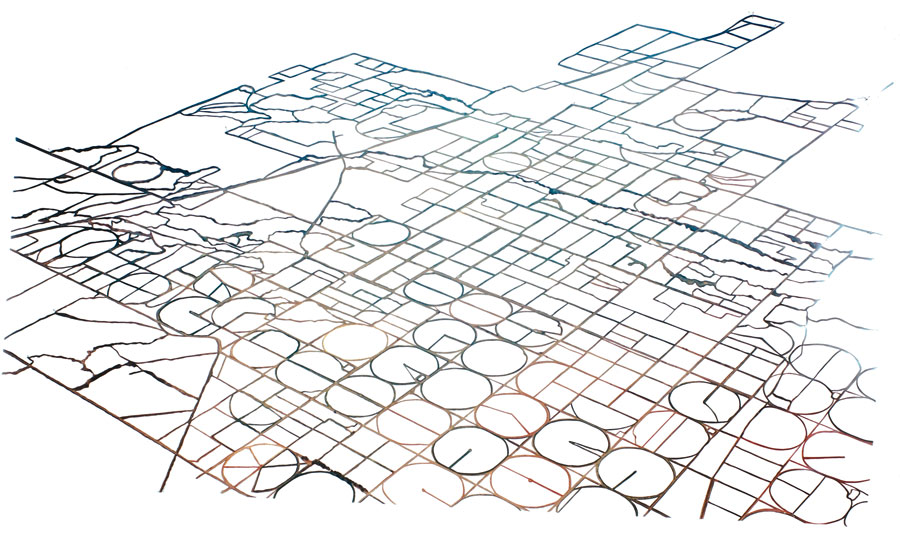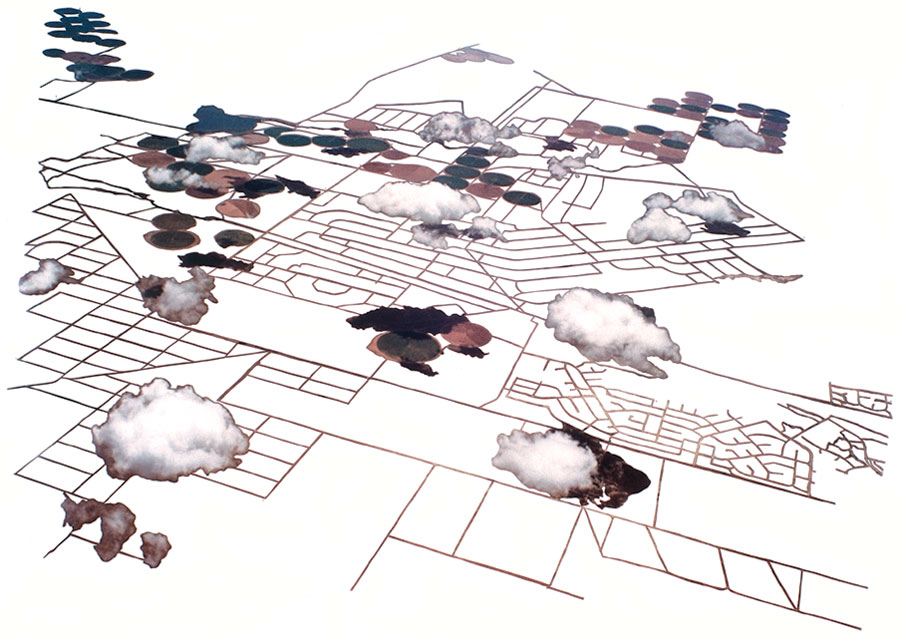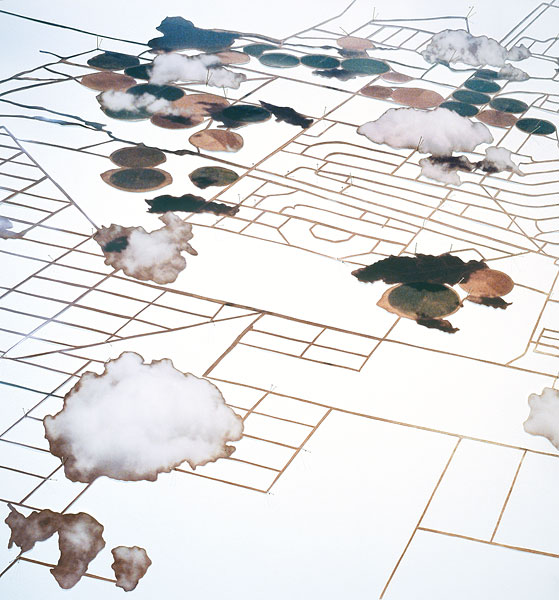
Cut Wake/Separated Flow (08) at 26°N 52°W (Uncertain) Approx. 6m x 3m (2009)
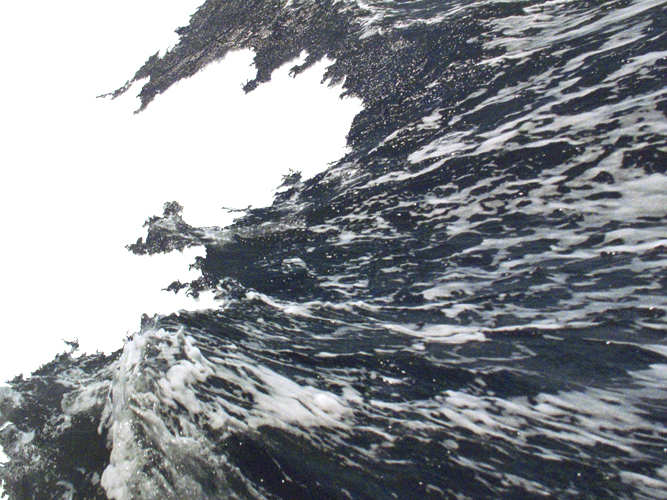
Cut Wake/Separated Flow (08) Detail

Wetland Target 52°48’N 000°16’E? (Marsh) (2006)

Wetland Target 52°48’N 000°16’E? (Shoreline) (2006)

Target Island 52°49’N 000°17’E? (Clear) (2006)

Target Island 52°49’N 000°17’E? (Some Cloud) (2006)

Target Island 52°49’N 000°17’E? (Cloud) (2006)

Pivotal Discs (Nr Denver CO. USA) (1999/2009)
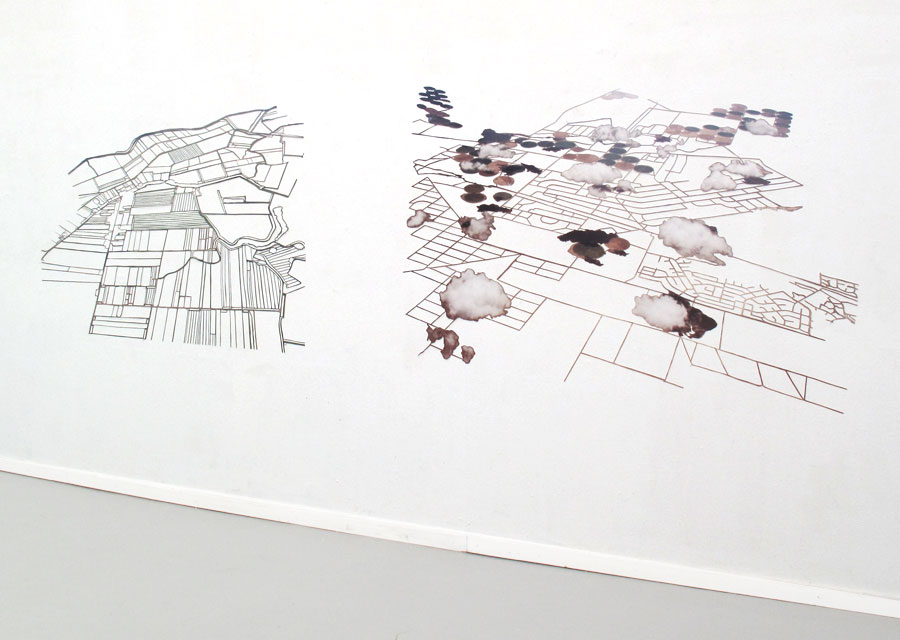
GedneyDroveEnd (2005) & Cut Aerial 3 (USA) (2001)
LIMINAL CUTS
Solo exhibition, Arti et Amicitiae, Amsterdam (April - May 2009)
Drawing together photographs, film stills and a selection of her signature cut outs, Howland’s installation explores orders of representation, climate and power as revealed in photographic and cartographic depictions of land, sea and coast. There are conflicting forces at play in this work. Cut-out aerial photographs of agriculture in desert and waterlogged regions highlight the imposition of human geometry. Cut Wake/Separated Flow (2008-09), a series of large cut-outs of a sailing yacht’s turbulent wake, isolates the trace of the boat’s passage. In Dungeness we look across an immaculately calm sea to a sunny strand, beach huts and a nuclear power plant cloaked in white mist. A perfectly circular island close to a coast has many identities not reported on maps: a practice target for British and US bombers, a site of scientific experimentation and, possibly, the location of early radar installations (Target Island 2006). Photographs taken from the air, ground and sea provide the impetus for Howland’s work. Cutting and layering disrupt the viewer’s position. The viewer is drawn to follow the lines and decipher the marks in these highly scopophilic, sometimes ominous works.

